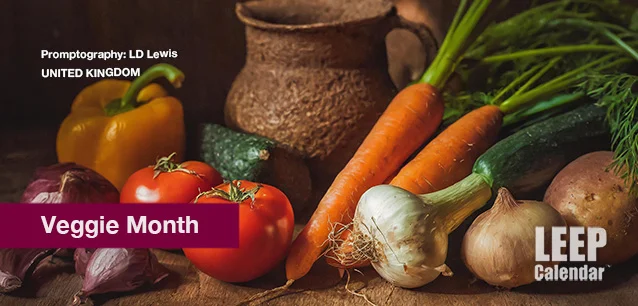 AD
AD
Today is: January 02
Scroll to explore events active on this date.
Additional Events on LEEP
LEEP INK FEATURES

August? Absolutely!
In August, we live through the Dog Days of Summer. It's hot and often humid, and those who can leave for better climates do. Down south, winter is in full force. August is also known as "the ...

In The Heat of July: July 2025 Events
Is it hot enough (or cold enough if you're below the equator) for you yet? There is actually a day for that! Like every month, I pick a diverse collection of events you may or may not know about. This ...

May Blooms: Events in May 2025
Along with October, May is one of the most densely packed months of the year. It's before the summer humidity and the last whole month of the school year. The weather is warming in t...
About Veggie Month in the United Kingdom
Retail , United Kingdom & Ireland
Ends: Mar 31, 2024
DESCRIPTION:
Veggie Month in the United Kingdom, celebrated in March, encourages people to eat more vegetables and highlights the benefits of a plant-based diet. It promotes healthier eating habits but also about understanding the environmental impact of food choices. During Veggie Month, various events educate people about vegetarian and vegan diets, including cooking demonstrations, recipe sharing, and discussions about sustainable agriculture.
In terms of vegetables that are in season in the UK in March, you'll find a variety of hearty vegetables that thrive in the cooler weather. Some of these include:
Leeks—prized for their mild, onion-like flavor, leeks are versatile and can be used in various dishes, from soups to pies.
Brussels Sprouts—these small, cabbage-like vegetables deliver a slightly bitter, nutty flavor.
Parsnips—a root vegetable, parsnips are sweet and can be roasted, boiled, or used in soups and stews.
Cabbage—available in several varieties, cabbage is a staple in many dishes and can be used in everything from salads to fermented foods like sauerkraut.
Kale—a hardy green vegetable, kale is packed with nutrients and added to salads, smoothies, or as a cooked side dish.
Swede (Rutabaga) is a root vegetable that is a cross between a cabbage and a turnip (swede). It is often mashed or used in stews.
For those looking to plant vegetables in March for a summer or fall harvest in the UK, consider the following options:
Tomatoes: Start them indoors in March and transplant them outside after the last frost. They require a sunny spot and regular watering.
Peppers: Like tomatoes, peppers should be started indoors and moved outside in late spring. They need warmth and sunlight to thrive.
Beetroot: Easy to grow, beetroot can be sown directly into the soil in March for a summer harvest.
Carrots: These can be sown directly into the ground in March. They need loose, well-drained soil.
Lettuce and Salad Leaves: Perfect for continuous harvesting, these can be sown directly into the ground or in containers.
Peas: Hardy and easy to grow, peas can be sown directly into the ground in March. They require support as they grow.
Remember, gardening success can vary based on specific local climate conditions, so it's always a good idea to consult a local gardening expert or resource for tailored advice.
VIDEOS
SUPPORTING DOCUMENTS
Currently, this event does not have supporting documents.
ADDITIONAL IMAGES
Currently, this event does not have supporting images.
Where would you like to go now?
 AD
AD


/footer-logo.svg)
